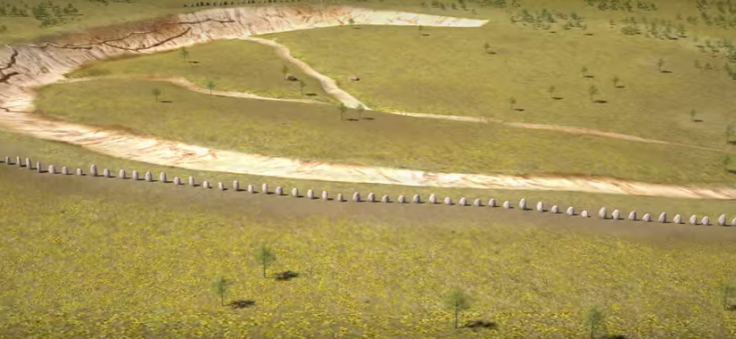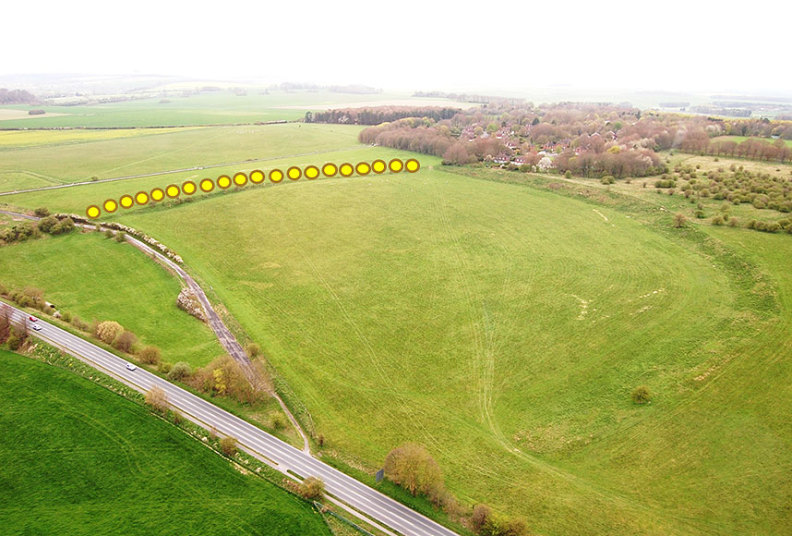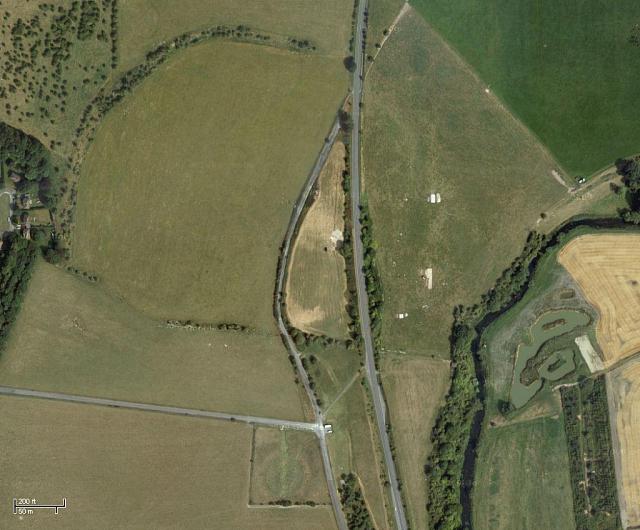A new find on Salisbury Plain in Wiltshire, England has set the archaeological world on its head and stoked the fires of imagination for history buffs all over the world. Using powerful ground-penetrating radar, researchers have uncovered evidence of an enormous stone monument buried under a huge earth embankment known as the Durrington Walls. This new discovery is a scant couple of miles from one of the earth’s iconic monuments, Stonehenge.
As part of a four-year project that includes work with international experts, a team of researchers from the Universities of Birmingham and Bradford have identified fifty enormous monoliths arranged in a 300 meters-long horseshoe-shaped line buried under the henge. Professor Vincent Gaffney, an archaeologist on the project, said, “Not only does this new evidence demonstrate a completely unexpected phase of monumental architecture at one of the greatest ceremonial sites in prehistoric Europe, the new stone row could well be contemporary with the famous Stonehenge sarsen circle or even earlier.” All in all, the team located seventeen previously unknown Neolithic monuments.
Researchers found forty stones, complete but buried under the henge, thirty-five broken stones also buried, and approximately fifty empty pockets where it is possible stones had once stood. As all this information was gained using a non-invasive method, it is impossible to date these stones or to identify what type of rock they are. Popular belief is that the stones are sandstone sarsens similar to those erected at Stonehenge and that they were erected at a similar time as Stonehenge. The glaring question then arises; why were they buried?
Could they have been erected prior to Stonehenge and then robbed to use either at Stonehenge or in the erection of the stones at Stonehenge? Is this why they were buried, or did their burial have to do with some apocalyptic event that Neolithic man thought so portentous that he buried his monument. Could this have been something like a solar eclipse? Was there a deadly outbreak of disease? Did all the crops fail due to flood, pestilence or drought? We can only wonder and until the entire bank is excavated it is unlikely that any factual evidence is available to answer these questions.

What are some of the facts that we do have at our fingertips? One fact is that there are numerous excavated pits that contain both animal and human bones. Interestingly, the animal bones are found in almost entire skeletons indicating that the beast, in many cases a pig, was not killed for food but rather as some form of sacrifice. Also found were human remains with arrow tips in their spines and heads. Were these people some form of human sacrifice? The location of their bodies within the monuments suggests that this is possible. If this is true, then large areas of the plain were used for religious purposes, as these pits can be found in several locations. Does this mean that Neolithic man did not worship in a building but used the sky as a ceiling and the earth as the floor? Many ancient religions were tied to natural entities such as the sun, moon, earth, water and trees, so using the great outdoors as a place of worship would not be far-fetched.

The ditch surrounding the entire monument could also have been used for more than one function. Perhaps it was used for people to sit on while watching or partaking in the religious practices. Perhaps it was used to keep people away and to hide certain practices from them. One such activity could be the rite of passage of a young man from boyhood to manhood. This is, even today, a practice that is traditionally barred to women, so is it possible the bank was there to bar them from the scene?
A new theory suggests that these stones were buried because of a change in religious beliefs in the third century BC. This hypothesis is based on the fact that the open end of the horseshoe faces the Beacon Hills and that gradually the worship of landscapes and natural landmarks changed to worship of deities based on the sun or the moon. Thus Stonehenge, with its alignment to the phases of the sun at midsummer and midwinter, was built. If this could be conclusively proven it would be remarkable to be able to pinpoint the exact time that the basis of worship changed.
Another theory along the same line is that at the anticipated time these stones were erected, farming was just arriving in England. The age of the pure hunter-gatherer was waning, and people became more settled; beginning the domestication of animals and starting to plant crops. Researchers have found evidence of settlements where houses were built with wattle and daub construction and had doors and hearths. Thus, the seasons assumed a great deal of importance for the production of food; not simply the collection of food. Again, did this prompt the erection of Stonehenge with its solar alignment and the internment of the stones under the Durrington Walls?
Salisbury Plain contains much history, but the fact remains that Neolithic man, armed only with the most basic of tools, managed to change the natural landscape and build something that rose above the normal features of the plain. The astronomical amount of work that would have been required to raise this bank and cover these stones is truly astonishing. Modern man can only, once again, stand and marvel at this plain. It has been used for many thousands of years by generations of people, to build structures, use those structures, and then for some reason abandon them, leaving all their knowledge lost to the mists of time. This mystical plain is one of the enduring mysteries that still fires our imagination.
